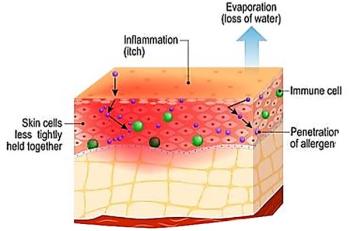
Lipid Levels Linked to Inflammation in Atopic Asthma
Results of a recent study into the role of lipids in atopic asthma could help identify new targets for therapy.
High-density lipoprotein (HDL) cholesterol levels may have a protective role and triglycerides may have a negative role in the development of asthma, according to a new study.
The results highlight the potential role for lipids in the inflammation associated with asthma and could lead to development of new targets for asthma therapy.
Blood levels of HDL and apolipoprotein A-I ( have been associated with less severe airflow obstruction in asthma, and there is an increasing recognition that apolipoprotein pathways may participate in the pathogenesis of lung disease. Researchers led by Dr. Amisha Barochia of the National Heart, Lung and Blood Institute in Bethesda, MD, set out to determine whether serum lipids or lipoprotein particles correlate with type 2 inflammation in asthmatics.
The researchers published their
[[{"type":"media","view_mode":"media_crop","fid":"62289","attributes":{"alt":"","class":"media-image media-image-right","id":"media_crop_4625059310443","media_crop_h":"0","media_crop_image_style":"-1","media_crop_instance":"7909","media_crop_rotate":"0","media_crop_scale_h":"0","media_crop_scale_w":"0","media_crop_w":"0","media_crop_x":"0","media_crop_y":"0","style":"height: 268px; width: 265px; float: right;","title":"Apolipoprotein A 1","typeof":"foaf:Image"}}]]They assessed whether serum lipids and lipoproteins correlated with blood eosinophil counts or serum periostin levels in 165 clinically stable, atopic asthmatics and 163 healthy, non- asthmatics.
In those with atopic asthma, blood eosinophils negatively correlated with serum HDL-cholesterol and total HDL particles. In contrast, blood eosinophil counts positively correlated with serum triglyceride levels, independent of age, sex, race, body mass index, and serum C-reactive protein levels.
“This study demonstrates for the first time that HDL particles were negatively correlated, whereas serum triglycerides were positively correlated, with blood eosinophils in atopic asthmatics. This supports the concept that serum levels of HDL and triglycerides may be linked to systemic type 2 inflammation in atopic asthma,” the researchers stated.
They hypothesize that the anti-inflammatory properties of HDL may contribute to the negative correlation with blood eosinophil counts in atopic asthmatics.
The level of correlation seen is consistent with the biology of systemic type 2 inflammation, which is very complex, the researchers noted.
“That these relationships could be biologically relevant in asthma is suggested by the robustness of the results in asthmatics even after adjusting for multiple potential confounders, including the use of lipid profile modifying medications or inhaled corticosteroids,” the researchers stated.
In addition, these results are consistent with the associations they previously described between FEV1 and serum lipids and lipoproteins in asthmatics.
The researchers have also found that serum cholesterol levels are not associated with blood eosinophil counts, serum periostin levels, or FEV1, “which suggests that modifying cholesterol levels alone may not be sufficient to manage asthma control,” they stated. HDL particles contain at least 85 different proteins, which leads to the hypothesis that HDL-associated proteins, rather than its cholesterol content, may be more relevant for the associations between biomarkers of type 2 inflammation and airflow obstruction.
Because this was a cross-sectional study and these relationships may change over time, the researchers have begun collecting longitudinal data.
“Our findings provide new insights regarding potential mechanisms that may modulate type 2 inflammation in allergic asthma,” they concluded. Future studies may determine how lipids or lipoproteins might modulate disease pathogenesis in allergic asthma, which may shed light on potential new targets for therapy.
Newsletter
Enhance your clinical practice with the Patient Care newsletter, offering the latest evidence-based guidelines, diagnostic insights, and treatment strategies for primary care physicians.






























































































































































































































































































































